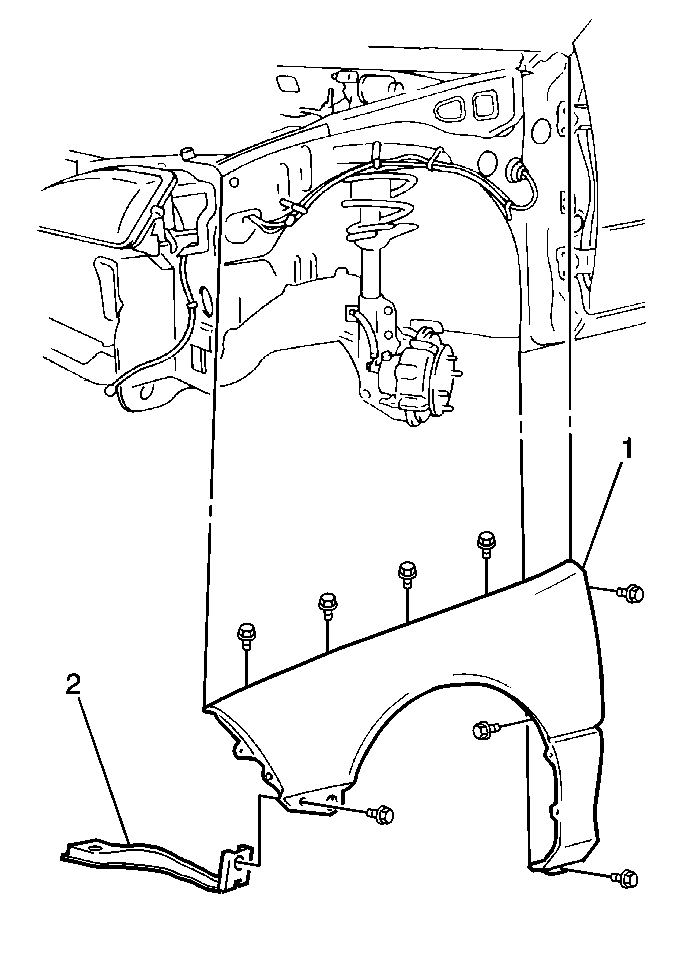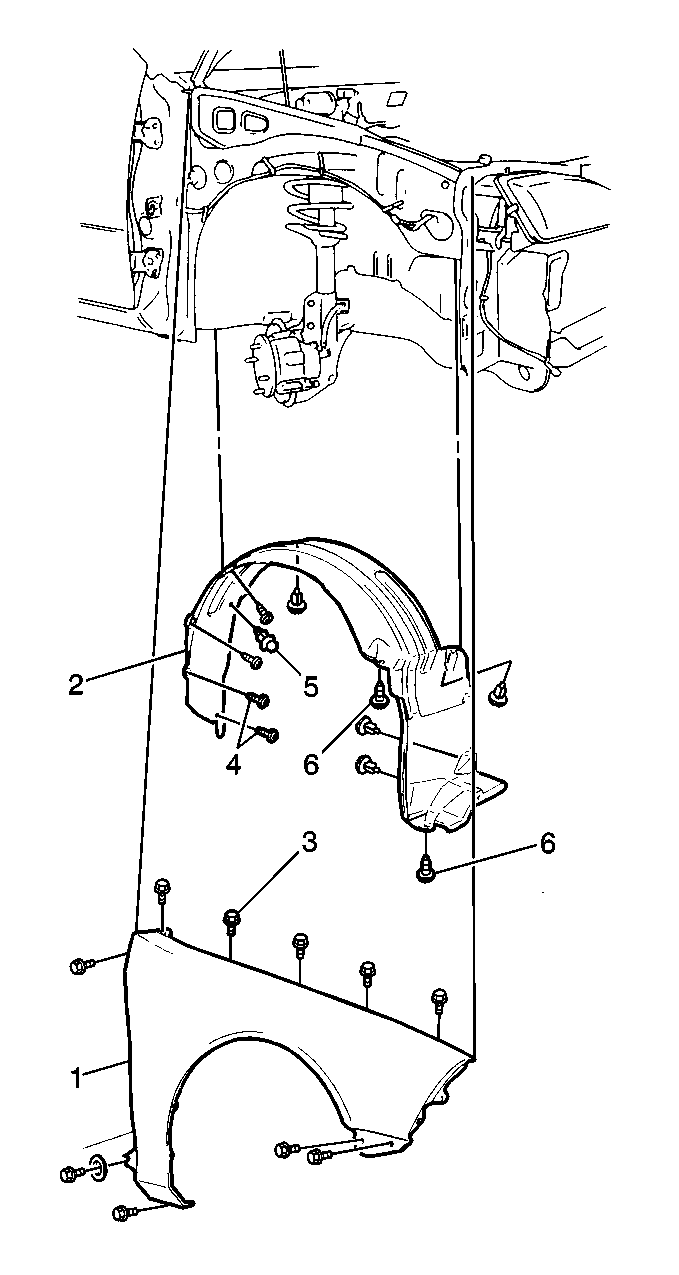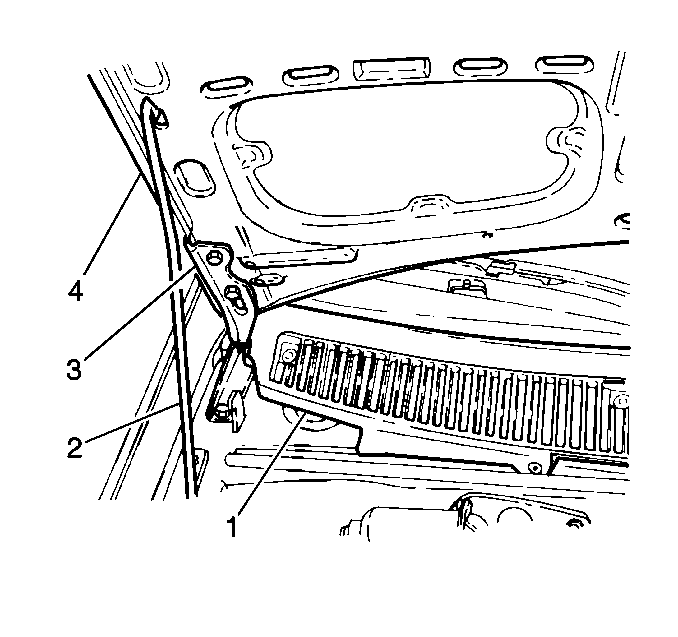
Notice: Anti-corrosion compounds have been applied to the interior surfaces
of some metal panels to provide rust resistance. When servicing these panels
in areas on which this material has been disturbed, or when installing new
panels, avoid corrosion damage by coating with anti-corrosion compound.
Notice: Use the correct fastener in the correct location. Replacement fasteners
must be the correct part number for that application. Fasteners requiring
replacement or fasteners requiring the use of thread locking compound or sealant
are identified in the service procedure. Do not use paints, lubricants, or
corrosion inhibitors on fasteners or fastener joint surfaces unless specified.
These coatings affect fastener torque and joint clamping force and may damage
the fastener. Use the correct tightening sequence and specifications when
installing fasteners in order to avoid damage to parts and systems.
- Slide the front
fender (1) onto the side slider of the bumper. Position the fender (1)
on the vehicle. Secure the front fender to the front fender brace (2)
with the bolt.
Tighten
Tighten the bolt to 20 N·m (15 lb ft).
- Install the support nut that retains the front fender to the front
bumper fascia.
Tighten
Tighten the nut to 20 N·m (15 lb ft).

- Secure the front fender (1)
with the following bolts:
| • | The bolt at the inner front fender |
| • | The 4 bolts (3) at the upper front fender |
| • | The 2 front fender bolts at the door pillar |
Tighten
Tighten the front fender bolts to 20 N·m (15 lb ft).
- Install the wheelhouse panel (2). Secure the panel with
the following components:
- Install the tire and wheel assembly. Refer to
Tire and Wheel Removal and Installation
in Tires
and Wheels.
- Lower the vehicle.

- Secure the air inlet grille
panel (1) with the 2 retainers.
- Secure the rear hood seal with the 2 retainers.
- Install the headlamp. Refer to
Headlamp Replacement
in Lighting Systems.






